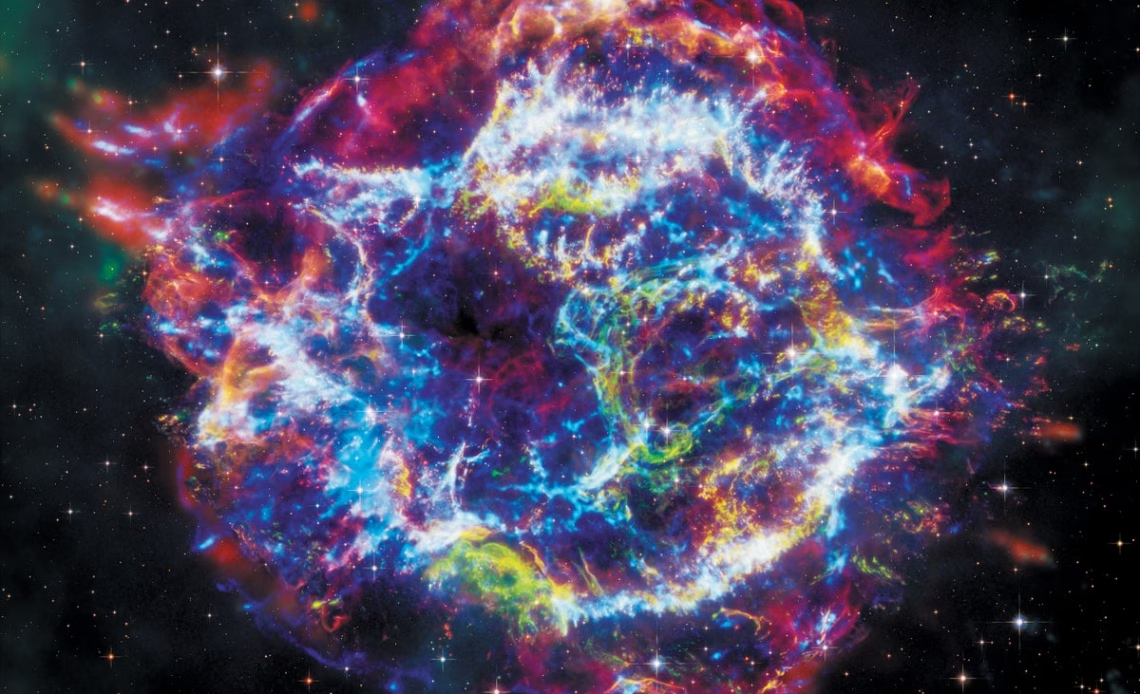As soon as a star is born, it starts fighting a battle with gravity. A burning star constantly releases enough energy to counteract gravity’s inward pressure. But once its fuel runs out, gravity wins: the star implodes, and most of its mass becomes either a neutron star—an ultradense object about the size of a city—or a black hole. The rest explodes outward, flying into space like bullets.
Astronomers recently captured new images of the aftermath of this violence by training the James Webb Space Telescope (JWST) on the young supernova remnant called Cassiopeia A. The light from its explosion reached Earth about 350 years ago, around the time of Isaac Newton. “This particular object is very important because it’s relatively nearby and it’s young, so what you see is a frozen-in-time picture of how the star blew up,” says Dartmouth College astronomer Robert A. Fesen.
Astronomers have studied this nearby spectacle for decades, but JWST got a closer look than any past observatory. “The Webb images are really amazing,” says Fesen, who led the first team that studied Cassiopeia A with the Hubble Space Telescope. Hubble observes in primarily optical light—the wavelength range human eyes can see whereas JWST captures longer-wavelength infrared light, and it does so with a larger mirror that captures images in higher resolution.
On supporting science journalism
If you’re enjoying this article, consider supporting our award-winning journalism by subscribing. By purchasing a subscription you are helping to ensure the future of impactful stories about the discoveries and ideas shaping our world today.
The recent photographs are helping scientists answer some of their most pressing questions about supernovae, such as which types of stars explode in which ways and how exactly those outbursts unfold. “There is a lot of complicated but beautiful physics in understanding how this explosion takes place,” says Purdue University astronomer Danny Milisavljevic, who led the team behind the JWST images.
Stars start off burning hydrogen into helium inside their fusion furnaces. When the hydrogen is used up, they fuse helium to make carbon, then carbon to make neon, and so on, until they reach iron, which costs more energy to fuse than it releases. At this point the star begins to collapse under gravity, and its matter falls in until most of the protons and electrons inside its atoms have been smushed together to form neutrons. Eventually the neutrons…
Click Here to Read the Full Original Article at Scientific American Content: Global…

